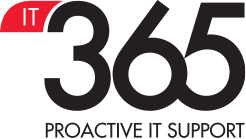Microsoft Virtual Desktop
Cloud-based virtual desktop infrastructure: create Virtual Machines on your Azure account in seconds. Scale to what you need. Pay for what you use.
Microsoft Virtual Desktop
Microsoft Virtual Desktop is a comprehensive desktop and app virtualisation service running in the cloud. It’s the only virtual desktop infrastructure (VDI) that delivers simplified management, multi-session Windows 10, optimisations for Microsoft 365 Apps for enterprise, and support for Remote Desktop Services (RDS) environments. Deploy and scale your Windows desktops and apps on Azure in minutes, and get built-in security and compliance features.
Windows Virtual Desktop
What is Windows Virtual Desktop?
Windows Virtual Desktop is a desktop and app virtualization service that runs in the cloud.
Here’s what you can do when you run Windows Virtual Desktop on Azure:
- Set up a multi-session Windows 10 deployment that delivers full Windows 10 with scalability
- Virtualise Microsoft 365 Apps for enterprise and optimise it to run in multi-user virtual scenarios
- Provide Windows 7 virtual desktops with free Extended Security Updates
- Bring your existing Remote Desktop Services (RDS) and Windows Server desktops and apps to any computer
- Virtualise both desktops and apps
- Manage Windows 10, Windows Server, and Windows 7 desktops and apps with a unified management experience
Key capabilities
With Windows Virtual Desktop, you can set up a scalable and flexible environment:
- Create a full desktop virtualisation environment in your Azure subscription without having to run any additional gateway servers.
- Publish as many host pools as you need to accommodate your diverse workloads.
- Bring your own image for production workloads or test from the Azure Gallery.
- Reduce costs with pooled, multi-session resources. With the new Windows 10 Enterprise multi-session capability exclusive to Windows Virtual Desktop and Remote Desktop Session Host (RDSH) role on Windows Server, you can greatly reduce the number of virtual machines and operating system (OS) overhead while still providing the same resources to your users.
- Provide individual ownership through personal (persistent) desktops.
You can deploy and manage virtual desktops:
- Use the Azure portal, Windows Virtual Desktop PowerShell and REST interfaces to configure the host pools, create app groups, assign users, and publish resources.
- Publish full desktop or individual remote apps from a single host pool, create individual app groups for different sets of users, or even assign users to multiple app groups to reduce the number of images.
- As you manage your environment, use built-in delegated access to assign roles and collect diagnostics to understand various configuration or user errors.
- Use the new Diagnostics service to troubleshoot errors.
- Only manage the image and virtual machines, not the infrastructure. You don’t need to personally manage the Remote Desktop roles like you do with Remote Desktop Services, just the virtual machines in your Azure subscription.
You can also assign and connect users to your virtual desktops:
- Once assigned, users can launch any Windows Virtual Desktop client to connect users to their published Windows desktops and applications. Connect from any device through either a native application on your device or the Windows Virtual Desktop HTML5 web client.
- Securely establish users through reverse connections to the service, so you never have to leave any inbound ports open.
To learn more about how we can help you realise the benefits of Windows Virtual Desktop in your business, give us a call on 0345 051 0600 or email enquiries@itsupport365.co.uk. We would be pleased to have a no-obligation conversation with you.
ServiceDesk365
IT Support 365’s ServiceDesk365 is a proactive service for managing your complete IT system – the infrastructure, network, servers and desktop PCs. It’s a preventative approach to IT systems management, using a series of ‘best practices’ developed over years of experience.
